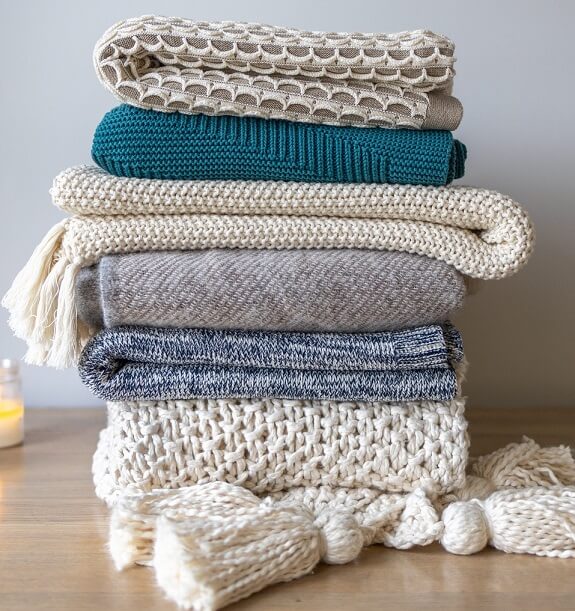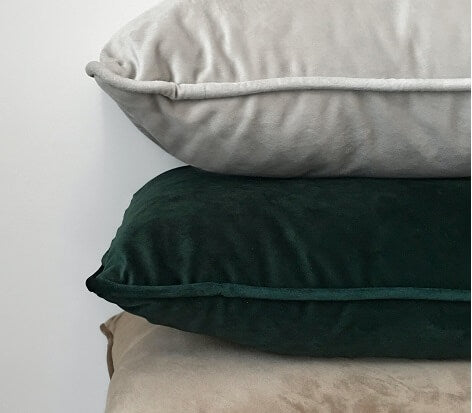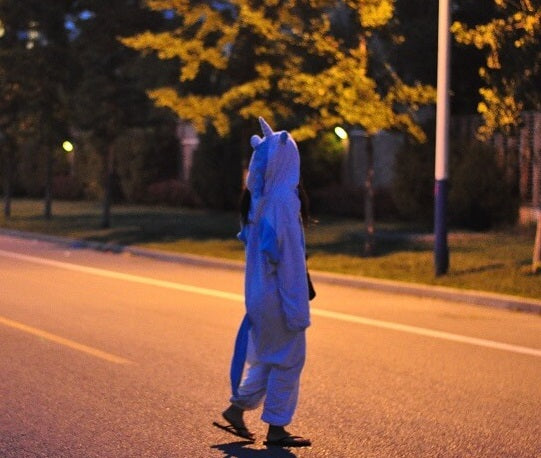Are you looking to improve your sleep quality and wake up feeling more refreshed each morning? Look no further than your choice of best pajama tops. The Connection Between Pajama Tops, and Improved Sleep Quality is more significant than you may realize. By selecting pajama tops made of breathable and comfortable fabrics, you can enhance your sleep experience in ways you never thought possible. In this blog post, we will explore how the right pajama tops can contribute to a better night's sleep and ultimately improve your overall well-being.

Understanding the Connection Between Pajama Tops and Improved Sleep Quality
The influence of pajama tops on the quality of our sleep might be more profound than many of us assume. This connection is grounded in how the materials and design of what we wear to bed interact with our body's physiological needs during sleep. As we delve deeper into this relationship, it's clear that the choices we make in our sleepwear can either promote a night of restful sleep or contribute to sleep disturbances.
The science behind this connection lies in how our body regulates temperature and responds to tactile sensations. Breathable fabrics used in sleepwear tops, such as cotton and bamboo, play a pivotal role in this process. They facilitate the natural thermoregulation of the body, allowing heat to dissipate and helping to maintain a comfortable sleeping temperature throughout the night. This temperature regulation is crucial for entering and sustaining periods of deep sleep, where the body's restorative processes occur.
Moreover, the tactile experience of soft, comfortable fabric against the skin can have a calming effect, signaling to the brain that it's time to wind down and prepare for sleep. This psychological response to the sensory input from our sleepwear further underscores the importance of material choice in pajama tops. Additionally, the psychological aspect of wearing something that feels good and looks appealing can positively influence our mood and mindset at bedtime, further facilitating the transition to sleep.
This nuanced interaction between pajama tops and our sleep quality highlights the importance of making informed choices about our sleepwear. Understanding the materials that offer the best in comfort and breathability, and recognizing the role of fit and design in our sleepwear, can make a significant difference in achieving a night of deep, restorative sleep. As we consider these factors, the connection between pajama tops and improved sleep quality becomes an essential consideration for anyone looking to enhance their sleep experience.
The Importance of Choosing the Right Fabric for Your Pajama Tops
Selecting the ideal fabric for your pajama tops is not just about the touch and feel; it's about understanding how different materials interact with your skin and sleep cycle. Natural fibers like cotton, silk, and bamboo stand out as superior choices for several reasons. Each of these fabrics brings its unique benefits to the table, ensuring your night's sleep is as uninterrupted and comfortable as possible.
Cotton, known for its softness and breathability, is a classic option that efficiently absorbs moisture, keeping you dry and comfortable throughout the night. It's perfect for those who tend to sleep hot or live in warmer climates. Silk, on the other hand, offers a luxurious feel against the skin while providing excellent temperature regulation properties. It can keep you cool during summer nights and warm in the colder months, making it a versatile option year-round. Bamboo fabric is another excellent choice, celebrated for its eco-friendly qualities and moisture-wicking abilities. It’s incredibly soft, hypoallergenic, and has natural antibacterial properties, making it ideal for sensitive skin.
These fabrics not only ensure comfort but also contribute to the overall quality of your sleep by regulating your body temperature and minimizing any potential for skin irritation. The right material can make a significant difference in achieving deep, restorative sleep. When exploring options, it's beneficial to consider not only the fabric's feel but also its environmental impact and durability. Sustainable and long-lasting materials like bamboo and organic cotton are not only better for the planet but also tend to maintain their quality and comfort over time, providing you with endless nights of good sleep. Prioritizing these aspects when choosing your pajama tops will enhance your sleep environment and ensure your night-time attire supports your sleep health optimally.
The Role of Fit and Design in Enhancing Sleep Comfort
When considering the impact of pajama tops on sleep comfort, it's essential to take into account both the fit and the design of these garments. A pajama top that is too tight might restrict movement, potentially leading to discomfort and interrupted sleep patterns. Conversely, a top that is excessively loose might not provide the necessary warmth or could become twisted, causing discomfort during the night. Finding a balance with a relaxed fit that allows for ease of movement without excess fabric is key to promoting a serene and comfortable sleep environment.
The design of pajama tops also plays a pivotal role in enhancing sleep comfort. Features such as flat seams, minimalistic designs without bulky buttons or zippers, and necklines that don’t constrict or irritate are important considerations. These elements ensure that nothing interferes with your comfort throughout the night. Additionally, choosing designs that reflect personal style and bring joy can positively affect one's mood before bedtime, further promoting a sense of well-being and relaxation that is conducive to sleep.
It's also worth considering the psychological impact of wearing pajama tops that make you feel good about yourself. Just as the fabric choice can signal to the brain that it’s time to unwind, donning sleepwear that you find visually appealing can enhance the pre-sleep ritual, making the transition from wakefulness to sleep smoother and more enjoyable. The interplay between the physical comfort provided by the right fit and the psychological boost from a pleasing design underscores the comprehensive role pajama tops play in optimizing sleep comfort.

How Pajama Tops Affect Your Sleep Environment
The role pajama tops play in shaping your sleep environment extends beyond simple comfort. By selecting pajama tops crafted from breathable materials, you not only ensure your body remains at a comfortable temperature but also influence the overall ambiance of your sleeping area. The psychological aspect of wearing something that makes you feel relaxed and at ease cannot be understated. It contributes to a sleep space that feels safe, personalized, and conducive to rest. The texture and quality of the fabric against your skin also enhance the tactile experience of your bed, making it a more inviting place to rest. Opting for pajama tops that align with your personal style and comfort preferences plays a crucial role in this process, further embedding a sense of serenity and contentment in your nighttime routine. This mindful approach to selecting sleepwear, focusing on the interplay between physical comfort and the aesthetic appeal of your pajama tops, transforms your sleep environment into a sanctuary optimized for deep, rejuvenating sleep. Engaging with these considerations elevates the importance of pajama tops from mere clothing items to integral components of your sleep health strategy.
Practical Tips for Choosing and Caring for Your Pajama Tops
Embarking on the quest to find the perfect pajama tops can significantly influence the caliber of your slumber. With a focus on fabric, fit, and design, you're well on your way to curating a collection of sleepwear that not only feels good but also supports your sleep health. Here are some practical tips to guide you through the selection and maintenance process, ensuring your pajama tops remain in prime condition for countless nights of restful sleep.
Firstly, pay close attention to the fabric of the pajama tops you consider. Materials like cotton, silk, and bamboo are top contenders for their breathability, moisture-wicking properties, and gentle touch on the skin. These fabrics not only promote thermal regulation but also cater to sensitive skin, reducing the risk of irritation or discomfort that can disrupt your sleep.
When it comes to fit, aim for a happy medium between too tight and too loose. A pajama top that gently skims the body offers the freedom of movement necessary for uninterrupted sleep, without the excess fabric that can lead to tangling or bunching up during the night. This balance ensures physical comfort and contributes to a seamless transition through the various stages of sleep.
Design elements, though often overlooked, play a significant role in the overall comfort of pajama tops. Opt for styles that minimize the presence of bothersome features such as large buttons, bulky seams, or tight cuffs. Such considerations not only enhance physical comfort but also add to the aesthetic pleasure of your sleepwear, boosting your mood and satisfaction with your sleep environment.
Finally, proper care of your pajama tops is paramount to preserving their quality and effectiveness. Follow the care instructions provided by the manufacturer to the letter, paying special attention to washing and drying guidelines. This might include washing in cold water to prevent shrinkage or air-drying to maintain fabric integrity. Regular maintenance not only extends the life of your pajama tops but also ensures they continue to provide the optimum comfort and functionality needed for a good night's sleep.
By adopting these tips for choosing and caring for your pajama tops, you're investing in your sleep quality and, by extension, your overall health and well-being. With thoughtful selection and meticulous care, your sleepwear can become a cornerstone of your nightly routine, fostering an environment conducive to deep, rejuvenating sleep.






